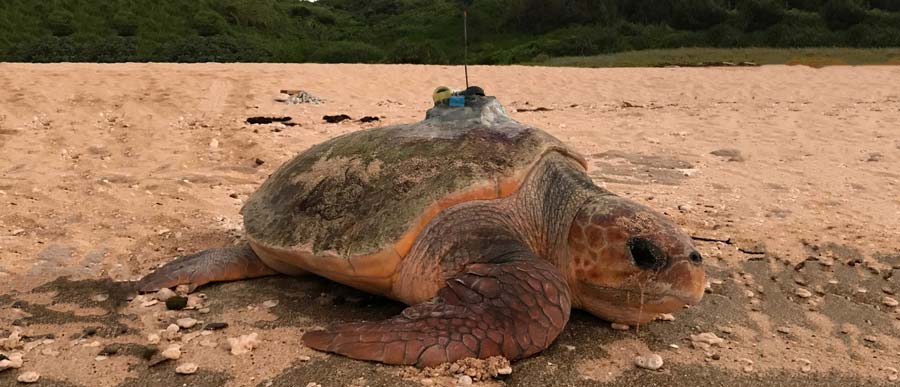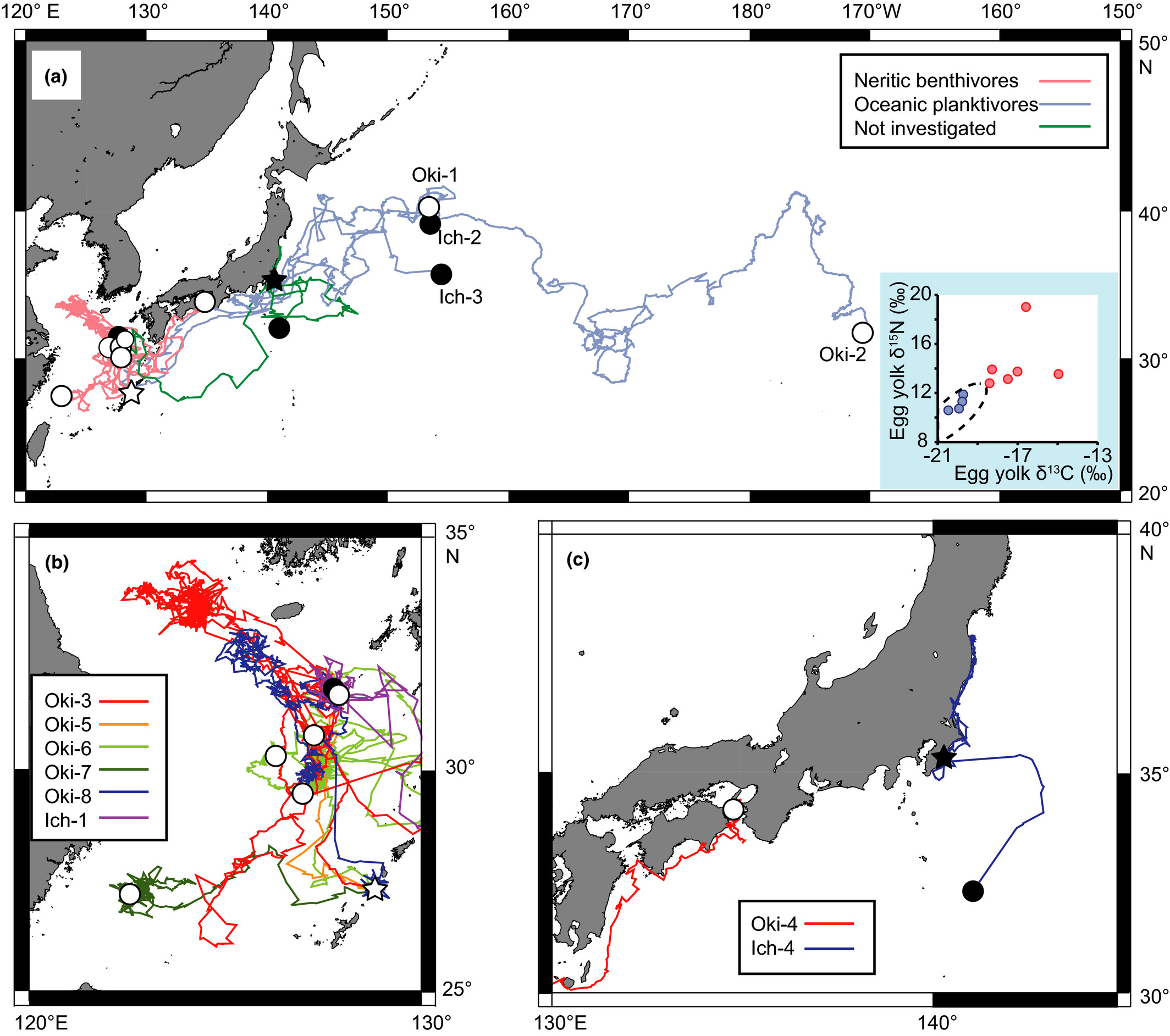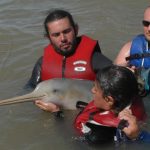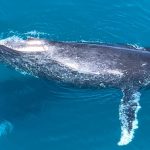← Back
Japan-nesting loggerhead turtles foraging habitats

Loggerhead turtles can forage either on continental shelf or in the open ocean. The North Pacific population, nesting whole in Japan show both behaviours. Their foraging areas are pinpointing using isotopic analysis and Argos tracking, to better define conservation measures.
Photo: a loggerhead turtle with an Argos PTT (credit Junichi Okuyama)
Loggerhead turtles (Caretta caretta) are found in all oceans – Atlantic Ocean & Mediterranean Sea (see Turtles in the Bay of Biscay, Understanding the tracking of three loggerhead turtles with ocean data, Tweeting Mediterranean Loggerhead turtles as oceanographers), Indian Ocean (Sea turtles in tropical cyclones, How do sea turtles fare after being rehabilitated and released?) and also in the Pacific Ocean. They are considered as vulnerable by IUCN. To implement conservation measures and priorities, assessing the size of the different populations is critical.
The Pacific loggerhead turtle populations are genetically distinct from the others, and even North and South Pacific populations are different from each other. In the North Pacific, all the loggerheads nest exclusively in Japan, where they can be classified into three genetic units: the Japanese archipelago, Yakushima and Okinawa. Those populations show two different foraging behaviors. The individuals forage either on the continental shelf (neritic habitat) or in the open ocean (oceanic habitat) after their reproductive period.
Over the last three decades loggerhead turtle nesting in Japan have known a rapid decline in the 1990s, followed by a gradual recovery. Since 2013, however, their number reduced again. Quantifying how many from each population will go for each or both habitats should help in defining priority conservation areas.
North Pacific loggerhead turtle tracking and foraging habits
Argos satellite-linked transmitters were deployed on 12 turtles. Eight transmitters were deployed on the southern Okinoerabu Island and four at the northernmost site of Ichinomiya. None were tagged on the southernmost Ishigaki Island, because none were encountered during the research period. The egg yolks of those turtles (and 72 more) were also analyzed for stable carbon isotopes, which can help discriminate between the two foraging habitat uses. The proportion of both behavior seems similar in the sample, tracked and not tracked.
More info about animal tracking with Argos

(a) Post-nesting migration of 12 female loggerhead turtles nesting at Okinoerabu Island (open star) and Ichinomiya (filled star). End points of the migration routes of the turtles nesting at Okinoerabu Island and Ichinomiya are represented by open and filled circles respectively. Red trajectories represent the migration routes of neritic foraging benthivores determined by isotope analysis, while blue trajectories represent those of oceanic planktivorous (green trajectories: egg samples couldn’t be collected). The graph in the blue-boxed graph illustrates the δ13C and δ15N values in yolks from eggs laid by loggerhead turtles whose post-nesting migration routes were tracked. Red dots represent turtles migrating to the neritic regions (East China Sea and the coastal area of the Japanese archipelago), while blue dots represent those migrating to the oceanic region in the North Pacific Ocean. The dashed line represents the partition between oceanic and neritic foraging types. Post-nesting migration routes and utilized areas of nesting loggerhead turtles are shown in (b) the East China Sea and (c) the coastal area of the Japanese archipelago. Each individual is represented by a color. Note that (b) and (c) show the migration routes only for turtles utilizing the East China Sea and coastal area of the Japanese archipelago respectively (from [Okuyama et al., 2022])
Five of the eight turtles nesting on Okinoerabu Island, one of those from Ichinomiya migrated to the East China Sea. One from both nesting sites went to the coastal area of the Japanese archipelago and stayed in the area for four months, the one from Ichinomiya then leaving for the open ocean. Two reached the oceanic area of the North Pacific Ocean, as well as two of the four females tagged at Ichinomiya.
Comparing the isotope analysis and the destination from the tracking show that the turtles classified as neritic benthivores (foraging on the continental shelf) went to the East China Sea (70% of the total isotope analysis) and the coastal area of the Japanese archipelago (9%). The oceanic planktivore (foraging in the Open Ocean, 22%) went to the North Pacific. Moreover comparing body sizes, oceanic foraging females were significantly smaller than neritic females.
Implications for conservation
Results show that a large part of the loggerhead turtles nesting in Japan are foraging over the continental shelf in the East China Sea. This area has not been considered much for marine turtle conservation, though, while fisheries bycatch is the main mortality case there.
The East China Sea, should thus be a priority conservation area for North Pacific loggerheads. Conservation management should include more countries surrounding the East China Sea, such as China, Taiwan and the Republic of Korea, to ensure their recovery.
Reference & links
Okuyama, J., Watabe, A., Takuma, S., Tanaka, K., Shirai, K., Murakami-Sugihara, N., Arita, M., Fujita, K., Nishizawa, H., Narazaki, T., Yamashita, Y., & Kameda, K. (2022). Latitudinal cline in the foraging dichotomy of loggerhead sea turtles reveals the importance of East China Sea for priority conservation. Diversity and Distributions, 00, 1–14. https://doi.org/10.1111/ddi.13531


